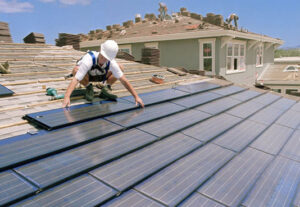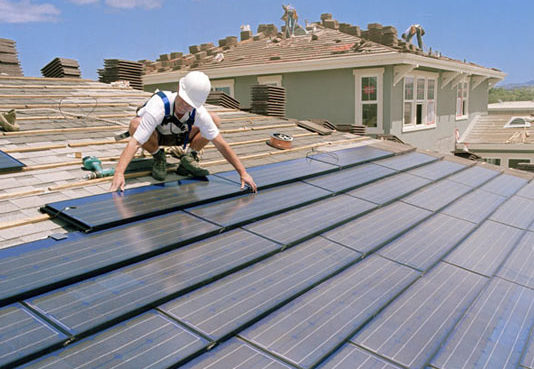If you are considering solar roofing for your home or business, there are a few things that you should know about the process. These include costs, energy efficiency, and maintenance. Here is a quick review of solar roofing materials and installation methods. You may also want to read our article on life span and energy efficiency.

If you want to save money on your electricity bills, solar roofing is the way to go. Solar roofs produce electricity that can be sold back to the electric company, which reduces your monthly costs. They can also increase the resale value of your home. One study found that a home with a 3.1-kilowatt solar system can add $14329 to its resale value.
A solar roof can cost up to $20,000 to install and buy. Many homeowners cannot afford this price. It can also take years to recoup this cost. This may make the solar system seem like a waste of money. However, a solar roof is a smart investment for your home in the long run.
One of the advantages of solar energy is that it is abundant and renewable. Earth has a limited supply of fossil fuels, but it has virtually unlimited sunlight. It’s also economical because solar energy will lower your electricity bill and give you control over energy prices. With traditional energy companies, prices change constantly, and solar energy will help you control your energy costs.
Solar shingles are complicated to install and require professional assistance. A solar roofing installer must assess the site and determine how much solar energy your home needs. This requires special equipment and scaffolding, which will add to the overall cost of labor. The roofer will then place the solar shingles one by one on the roof. They will also have to connect them to the electrical system. Finally, the installer will test the system to ensure that everything works.
Solar shingles are a great way to reduce your energy bills. Solar shingles look just like traditional shingles and provide clean energy production via photovoltaics. They convert solar energy from the sun into useful AC electricity. They also have the benefit of blending in with the rest of your house and roof. A solar shingle roof will pay for itself within five to seven years through energy savings. In addition, you can receive tax rebates for the installation.
The costs of solar shingle roofing can range from $21 to $25 per square foot. The cost to install a solar shingle roof depends on the size of your roof and the number of panels you need. A standard solar shingle roof requires approximately 350 square feet of solar shingles.
Solar panels have a long life span when installed in warm, dry conditions. This is due to the fact that solar cells are less susceptible to extreme humidity and heat. Furthermore, warm and dry temperatures prevent condensation on the cells. Because of this, they also degrade more slowly and last longer than solar panels installed in humid or cold environments.
However, solar panels must be carefully installed. They should be installed at an angle that helps them absorb as much sunlight as possible. Otherwise, water will accumulate and eventually cause rust. Furthermore, wind can cause strong vibrations, which can loosen components and damage them over time. Consequently, it is important to ensure that solar panels are installed at an angle that protects them from wind and rain.
The average lifespan of solar panels for housing is about 25 to 30 years, though some panels can last up to 50 years. This is largely dependent on the weather conditions in the area and personal preference. For example, there is a high chance of hail and rainstorms, which may significantly reduce the efficiency of solar panels. As a result, the amount of electricity generated by solar panels will decrease.
The useful life of solar panels can range from 25 to 30 years, depending on the manufacturer and model. The National Renewable Energy Laboratory (NREL) has determined that solar panels typically degrade by 0.5% per year. For this reason, it is important to monitor the output levels to determine when it is time to upgrade. A 25-year warranty is the industry standard.
